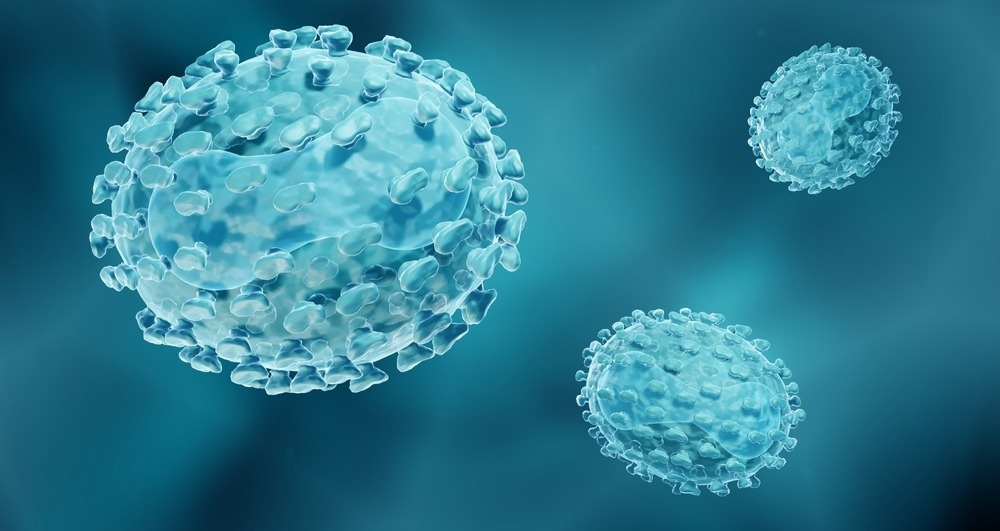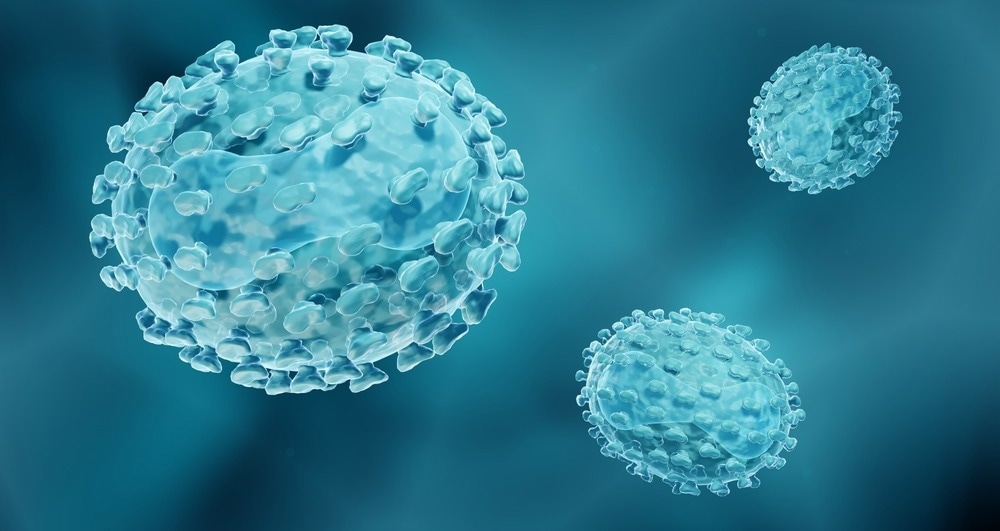In a recent review published in Clinical Immunology, researchers reviewed the epidemiology, clinical character, treatment, and prevention of human monkeypox (MPX).

Background and epidemiology
The MPX virus (MPXV) was first isolated from a colony of monkeys with non-fatal dermatitis in Denmark in 1958. Initially thought to infect animals alone, MPX was first detected in humans in the 1970s. MPX is endemic to Africa, and the virus has two clades – Central and Western African clades, varying in severity.
In 2022, the World Health Organization declared MPX a Public Health Emergency of International Concern after cases were reported from more than 70 countries. Males have been disproportionately affected in the ongoing outbreak. MPXV is a member of the Orthopoxvirus genus that includes vaccinia, variola, and cowpox viruses.
Host immune responses
Orthopoxviruses elicit host immune responses through several DNA-sensing mechanisms such as interferon (IFN)- γ inducible protein 17, DNA-dependent protein kinase, toll-like receptor 9 (TLR9), and GMP-AMP synthase. DNA sensors activate the stimulator of IFN genes (STING), activating nuclear factor (NF)-κB and IFN signaling pathways.
Natural killer (NK) cells play a critical role in regulating MPXV infection. One study found that MPXV infection causes robust proliferation of NK cells in the blood and lymph nodes in rhesus macaques. The adaptive immune responses are crucial for clearing viral particles after early innate responses. The cluster of differentiation 14-positive (CD14+) monocytes present MPXV antigens to CD4+ and CD8+ T lymphocytes.
These T cells coordinate the host’s serologic response, produce cytokines, and lyse infected cells. A study identified two CD8+ T cell-specific epitopes for MPXV’s F8L protein, a component of the viral DNA polymerase. T cell responses alone are inadequate to protect macaques from a lethal MPXV challenge.
One study demonstrated that macaques depleted of T cells had survived a deadly dose of MPXV administered after vaccination, underscoring the pivotal role of serologic responses. Several mechanisms allow MPXV to escape from type I IFN responses. MPXV decreases the efficacy of viral clearance by downregulating chemokine receptors critical for migration and cytotoxicity of NK cells.
Clinical features and diagnosis of MPX
MPXV spreads via direct contact with lesions, respiratory droplets, or bodily fluids. MPXV transmission also occurs from asymptomatic individuals, presenting additional challenges to diagnosis. Infected patients initially experience a prodrome of chills, fever, headache, myalgias, and lethargy before developing the characteristic rash.
The rash starts as a macular exanthem, eventually forming scabbed lesions, which could be ulcerated, hemorrhagic, or necrotic. Patients could also develop symptoms such as diarrhea, vomiting, mucositis, cough, dysphagia, pharyngitis, pruritus, photophobia, conjunctivitis, rhinorrhea, proctitis, and scrotal edema.
During the ongoing MPX outbreak, the viral incubation period is short, and skin lesions develop within 24 hours of contact with an infected subject in the absence of febrile prodrome. Polymerase chain reaction (PCR) tests diagnose MPXV infection. Using samples from skin lesions is the most reliable method.
Clinical outcomes and treatment for MPX
Most MPX patients require supportive care and only a subset of patients develop secondary complications, such as respiratory distress, encephalitis, ocular lesions, myocarditis, acute kidney injury, or severe pain. Severe disease necessitates systemic antiviral therapy and antibiotics for secondary infection.
Tecovirimat is an antiviral that inhibits the viral envelope protein (p37) and prevents the release of viral particles from infected cells. The Food and Drug Administration (FDA) approved the drug to treat smallpox and is used for severe MPX cases under investigational new drug protocol.
Vaccines
Most anti-Orthopoxvirus vaccines are based on those against the vaccinia virus due to cross-reactive antibodies against Orthopoxviruses. Dryvax is a live vaccinia virus grown on calf skin; it was initially used before smallpox was eradicated. Dryvax has been linked to multiple adverse outcomes, which could rarely be fatal. As such, a second-generation ACAM2000 vaccine has been developed.
A study reported that ACAM2000 was fully protective in monkeys after a lethal MPXV challenge without showing any signs of disease in immunized animals. ACAM2000, first approved in the United States (US) in 2007 for smallpox, is used for MPX prevention. Like Dryvax, ACAM2000 causes multiple complications, including pain and pruritus at the administration site, acute vaccinia syndrome, and lymphadenitis.
The modified vaccinia Ankara-Bavarian Nordic (MVA-BN) vaccine is a live, attenuated, replication-incompetent vaccinia virus. It was used initially for eradicating smallpox. Several studies have investigated the efficacy of MVA-BN against MPX. Additionally, DNA vaccines are also being investigated for MPX. Preliminary findings of DNA vaccination by delivering a plasmid via gene gun in rhesus macaques revealed that animals survived the subsequent lethal MPXV challenge.
Another study employed intramuscular administration of DNA vaccine alone or with recombinant antigens, given the impracticality of vaccinating humans via gene guns. The study found that intramuscular administration of plasmid DNA alone was insufficient to protect macaques from infection and death. However, the combination of plasmid DNA and recombinant antigens protected animals from death.
Conclusion
The ongoing MPX outbreak has uncovered the viral dynamics over time from being a zoonosis to primarily spreading via human-to-human transmission. Immunophenotyping and molecular sequencing of severe cases could help to identify biomarkers for severe disease. Vaccination against MPXV may be the best tool to control the outbreak. Further studies are required to explore antiviral therapeutics and better characterize at-risk populations.
- Al-Musa, A., Chou, J. and LaBere, B. (2022) "The resurgence of a neglected orthopoxvirus: Immunologic and clinical aspects of monkeypox virus infections over the past six decades", Clinical Immunology, 243, p. 109108. doi: 10.1016/j.clim.2022.109108. https://www.sciencedirect.com/science/article/pii/S1521661622001899
Posted in: Medical Science News | Medical Research News | Disease/Infection News
Tags: Acute Kidney Injury, Antibodies, Blood, CD4, Cell, Chemokine, Conjunctivitis, Cough, Cytokines, Cytotoxicity, Dermatitis, Diarrhea, DNA, DNA Polymerase, Dysphagia, Edema, Efficacy, Encephalitis, Epidemiology, Fever, Food, Gene, Genes, Headache, Immunology, Immunophenotyping, Interferon, Kidney, Kinase, Lethargy, Lymph Nodes, Lymphadenitis, Monkeypox, Mucositis, Myocarditis, Pain, Pharyngitis, Photophobia, Plasmid, Polymerase, Polymerase Chain Reaction, Proctitis, Proliferation, Protein, Pruritus, Public Health, Rash, Receptor, Respiratory, Rhinorrhea, Skin, Smallpox, Syndrome, Therapeutics, Vaccine, Vaccinia Virus, Virus, Vomiting, Zoonosis

Written by
Tarun Sai Lomte
Tarun is a writer based in Hyderabad, India. He has a Master’s degree in Biotechnology from the University of Hyderabad and is enthusiastic about scientific research. He enjoys reading research papers and literature reviews and is passionate about writing.
Source: Read Full Article



